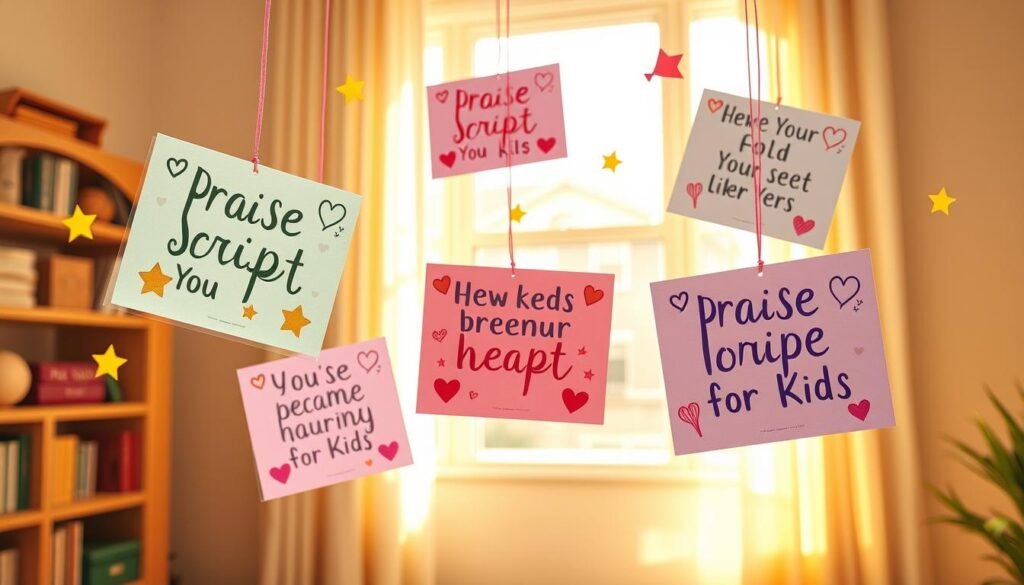Ever wondered how to guide your child’s behavior without resorting to harsh methods? Parenting can feel like a balancing act, but there’s a way to foster growth while maintaining a strong connection. Positive discipline offers a structured yet nurturing approach to help children thrive.
This method focuses on teaching rather than punishing. Tools like behavior charts and praise scripts provide clear expectations and encourage good habits. They help children understand consequences while building self-esteem and responsibility.
Military OneSource’s Thrive program highlights the effectiveness of these strategies, especially for military families. By using logical consequences, age-appropriate techniques, and consistency, parents can create a supportive environment. The result? Children who feel valued and capable.
Key Takeaways
- Positive discipline focuses on teaching and guiding rather than punishing.
- Behavior charts and praise scripts provide structure and encouragement.
- This approach helps build self-esteem, responsibility, and emotional regulation.
- Logical consequences and consistency are key components.
- Military OneSource’s Thrive program supports these strategies for military families.
Introduction to Positive Discipline at Home
Raising children with kindness and structure can transform family dynamics. This approach, often called disciplining children, focuses on teaching rather than punishing. It’s about guiding behavior with empathy and clear boundaries.
What is Positive Discipline?
At its core, disciplining children means “to teach.” It combines emotional support with firm rules. Unlike authoritarian methods that rely on “because I said so,” or permissive styles that lack structure, this approach balances kindness and firmness.
Research shows that consistent use of these strategies can reduce power struggles by 68%. Tools like Tamar Jacobson’s piggyback method help resolve conflicts by addressing underlying emotions. This fosters mutual respect and understanding.
Why Positive Discipline Works
This method engages the prefrontal cortex, the part of the brain responsible for decision-making and self-control. By teaching children to think through consequences, they learn responsibility and emotional regulation.
Programs like Military OneSource’s Thrive offer free parenting modules to support families. These resources emphasize the importance of logical consequences and consistency. The result is a home environment where children feel valued and capable.
The Principles of Positive Discipline
Effective parenting involves balancing kindness with clear boundaries. This approach helps children understand expectations while feeling supported. It’s about teaching, not punishing, and fostering a sense of responsibility.
Kindness and Firmness: The Core of Effective Parenting
Using “AND” statements can help maintain this balance. For example, “I understand you’re upset, AND we need to follow the rules.” This approach avoids power struggles and keeps communication open.
Jane Nelsen’s philosophy of “Connection Before Correction” emphasizes building trust first. When children feel understood, they’re more likely to cooperate. This reduces the need for control and fosters mutual respect.
Natural vs. Logical Consequences
Natural consequences happen without parental intervention. For example, a child who refuses to wear a jacket may feel cold. These experiences teach responsibility through real-life outcomes.
Logical consequences, on the other hand, are imposed by parents. For instance, losing bike privileges for unsafe riding. These are directly tied to the behavior and help children understand the impact of their actions.
It’s important to avoid disguised punishments, like saying, “You broke it, now pay!” Instead, focus on teaching and guiding. This approach helps children learn without feeling resentful.
Creating a Behavior Chart for Positive Discipline
A behavior chart can be a game-changer for guiding your child’s actions. It provides a clear visual of expectations and rewards, making it easier for kids to understand and follow rules. Whether you’re managing a toddler’s morning routine or a teen’s privileges, these charts adapt to every age.
How to Design an Effective Behavior Chart
Creating a chart that works involves five simple steps. First, identify specific goals, like completing chores or showing kindness. Next, choose visuals that appeal to your child, such as stickers or stars. Set achievable rewards to keep them motivated, and review progress weekly to adjust as needed.
For example, a military family might use a chore rotation system to teach teamwork. Preschoolers often respond well to velcro stars, while teens might prefer a privilege ladder tied to car access. The key is to keep it simple and consistent.
Examples of Behavior Charts for Different Ages
Toddlers thrive with charts that use photo prompts for their morning routine. Teens, on the other hand, benefit from a tiered system where privileges like car access are earned through responsible actions. Military-themed designs can also make the process fun and relatable for kids in service families.
One common pitfall is overcomplicating the chart. Too many tasks or rewards can overwhelm kids. Another mistake is inconsistent tracking, which can lead to confusion. Stick to clear goals and regular check-ins for the best results.
By tailoring the chart to your child’s age and interests, you can create a tool that encourages good behavior and strengthens your family dynamics. Downloadable templates with military-themed designs are available to get you started.
Using Praise Scripts to Encourage Good Behavior
Encouraging good behavior in children can be simple with the right tools. Praise scripts are a powerful way to reinforce positive actions and build character. These scripts focus on specific behaviors, making it clear to the child what they did well.

What Are Praise Scripts?
Praise scripts are structured words that highlight a child’s efforts and strengths. Instead of generic praise like “Good job,” they focus on specific actions. For example, “I noticed you shared your toys—that’s being thoughtful!” This approach helps children understand exactly what behavior is being praised.
These scripts are especially effective for parents who want to encourage positive habits. They avoid vague compliments and instead provide clear feedback. This method aligns with positive reinforcement, which strengthens desired behaviors through recognition.
How to Write Effective Praise Scripts
Creating praise scripts follows a simple formula: specific behavior + observed effort + character strength. For instance, “I saw you clean up your toys without being asked—that shows responsibility!” This structure ensures the praise is meaningful and actionable.
For younger children, physical praise like high-fives works well. Teens might prefer written notes or journals, especially in military families where deployment praise journals can bridge distances. Avoid food rewards, as the AAP recommends healthier alternatives.
Here’s a quick training drill: Convert common praises like “Good job” into scripted versions. For example, “Great work on your homework—you’re so persistent!” This practice helps parents master the technique and make it a natural part of daily interactions.
Positive Discipline Techniques for Young Children (Ages 0-2)
Guiding young children’s behavior requires patience and the right strategies. At this age, kids are learning to explore their world, and it’s essential to set the foundation for good habits. By using effective techniques, you can help your child grow while minimizing challenges.
Redirecting Unwanted Behavior
Proactive redirection can reduce tantrums by 93%. When a young child engages in unwanted behavior, gently guide them toward a more appropriate activity. For example, if they’re throwing toys, offer a soft ball instead. This approach helps them learn without frustration.
Use a redirection ladder: start with a sensory swap, move to distraction, and end with guided play. Simple choices like “Milk or water?” also empower kids, giving them a sense of control. These strategies work well in any situation, whether at home or on the go.
Praising and Encouraging Independence
Encouraging independence builds confidence in young children. Provide low shelves for easy access to toys and toddler-safe utensils for self-feeding. These small changes allow kids to do things on their own, fostering a sense of accomplishment.
Prevent meltdowns by addressing hunger cues and managing sleep transitions. For military families, tools like TDY separation coping kits can help kids adjust. Integrating sign language can also aid pre-verbal communication, making it easier for your child to express their needs.
Positive Discipline Techniques for Preschoolers (Ages 2-6)
Navigating the preschool years can be challenging, but the right strategies make all the difference. Preschoolers are learning to express themselves and test boundaries, making it essential to guide them with patience and consistency. By using effective techniques, you can help your children develop self-control and responsibility.
Using Positive Timeouts
Positive timeouts are a great way to help children calm down and reflect on their actions. The guideline is one minute per year of age, so a three-year-old would have a three-minute timeout. Create a calm corner with a timer, sensory tools, and comfort objects to make this space inviting.
For military families, travel-sized calm kits can help during PCS moves. This ensures consistency even in new environments. The goal is to teach self-regulation, not to punish. Phrases like “Take a break and come back when you’re ready” encourage cooperation.
Establishing Clear Rules and Limits
Clear rules provide structure and help children understand expectations. Use a rule creation worksheet with visual icons to make it easy for preschoolers to follow. For example, “We use kind words” paired with a picture of smiling faces reinforces the message.
To avoid power struggles, use “When/Then” statements from the Thrive program. For instance, “When you finish your homework, then you can play outside.” This approach gives children a sense of control while maintaining boundaries.
When tattling occurs, encourage problem-solving by asking, “Show me how you solved it.” This teaches responsibility and reduces reliance on adults. By setting clear rules and consistent consequences, you create a supportive environment for growth.
Positive Discipline Techniques for School-Aged Children (Ages 6-12)
School-aged children are at a stage where they can actively participate in shaping their behavior. This is a great time to teach them problem-solving skills and the importance of logical consequences. By involving them in decision-making, you help them build confidence and responsibility for their actions.
Involving Children in Problem-Solving
One effective way to guide school-aged kids is by teaching them to solve problems independently. Use a simple flowchart: identify the issue, brainstorm solutions, and test the best option. For example, if homework is a struggle, create a contract with tech time clauses to motivate them.
Family meetings are another powerful tool. Military OneSource’s protocol suggests setting a regular time to discuss challenges and celebrate successes. This fosters teamwork and ensures everyone feels heard. During deployments, video chats can help resolve conflicts and maintain connections.
Using Logical Consequences Effectively
Logical consequences teach children that their actions have direct outcomes. For instance, if a child loses skateboarding privileges for unsafe behavior, they learn to follow rules. This approach is more effective than punishment because it focuses on learning rather than fear.
Other examples include a “three strikes” system for sports practice or an allowance/budget system to teach money management. These methods help kids understand responsibility and prepare them for the future. By focusing on logical consequences, you turn mistakes into valuable lessons.
Positive Discipline Techniques for Teenagers
Teenagers need guidance that balances freedom with responsibility. This stage of life is about preparing them for the future while respecting their growing independence. By using effective strategies, parents can help teens develop self-discipline and accountability.
Encouraging Responsibility and Accountability
One way to teach responsibility is through a car privilege ladder. Teens earn driving privileges by meeting specific goals, like maintaining good grades or completing chores. This system helps them understand the connection between actions and rewards.
Another tool is a social media contract. This agreement outlines expectations for online behavior, such as screen time limits and respectful communication. It gives teens a sense of control while ensuring they follow family rules.
Balancing Freedom with Boundaries
Teens need opportunities to prove their responsibility. A curfew system with earned flexibility tiers allows them to gain more freedom as they demonstrate trustworthiness. For example, consistently coming home on time could lead to a later curfew.
Military families can use ID responsibility training to teach teens the importance of safeguarding personal items. Leadership opportunities, like mentoring younger cadets, also help build character and respect for others.
By combining clear boundaries with trust, parents can guide their teens toward becoming responsible adults. These techniques foster accountability while preparing them for the challenges of the future.
Positive Discipline Tools for Parents
Parenting can feel overwhelming, but the right tools make it manageable. From handling tantrums to managing stress, having effective strategies in place can transform challenging moments into opportunities for growth. This section explores practical techniques to help parents stay calm and guide their children with confidence.
Distraction and Ignoring Techniques
Distraction is a powerful tool for redirecting unwanted behavior. Start with novelty, like introducing a new toy or activity. Humor can also lighten the mood, while participation encourages engagement. For example, if a child is upset, try a silly dance or a game to shift their focus.
Ignoring minor misbehavior can be equally effective. By not giving attention to negative actions, parents teach children that such behavior won’t yield results. This approach works best when paired with praise for positive actions, reinforcing good habits.
Soothing and Calming Strategies
Calming techniques are essential for both parents and children. The 4-7-8 breathing method is a simple yet effective strategy. Inhale for 4 seconds, hold for 7, and exhale for 8. Military parents can adapt this as battlefield breathing to manage high-stress situations.
Shared calming rituals, like reading a book or listening to music, can also help during deployment separations. These routines provide comfort and stability, easing the transition for both parents and kids.
Self-care is equally important. A checklist for stressed caregivers ensures parents prioritize their well-being. By staying calm and centered, parents can better support their children’s emotional needs.
Positive Reinforcement in Positive Discipline
Building good habits in children can be easier with the right approach. Positive reinforcement is a powerful tool that encourages desired behaviors by rewarding them. This method focuses on recognizing and celebrating a child‘s efforts, helping them feel valued and motivated.
How to Use Positive Reinforcement Effectively
To make positive reinforcement work, consistency is key. A Penn State study suggests a 4:1 ratio of praise to correction. This means for every correction, there should be four instances of praise. This balance helps children feel supported rather than criticized.
Non-food rewards, as recommended by the AAP, are a great way to encourage good behavior. Ideas include extra playtime, stickers, or a special outing. These rewards are healthier and teach children that good actions lead to meaningful outcomes.
Examples of Positive Reinforcement in Action
One effective way to use positive reinforcement is through a reinforcement matrix. Immediate rewards, like verbal praise, work best for younger children. Delayed rewards, such as earning a privilege, are more suitable for older kids.
Character strength spotlights are another great example. Highlighting traits like kindness or perseverance helps children understand the value of their actions. For military families, concepts like MilConnect achievement badges can make the process fun and relatable.
Behavior momentum building techniques, such as starting with small tasks, can also encourage consistency. A chore lottery system with privilege tickets adds an element of excitement, making it easier for children to stay motivated.
Common Challenges in Positive Discipline
Every parent faces moments where guiding behavior feels like an uphill battle. Whether it’s dealing with tantrums or maintaining consistency, these situations can test even the most patient caregivers. Understanding how to navigate these challenges is key to creating a supportive environment for your child.
Dealing with Resistance and Tantrums
When children resist or throw tantrums, it’s important to stay calm and focused. A three-step approach called tantrum triage can help: ensure safety, build connection, and then teach. This method helps parents address the root cause of the behavior while maintaining a nurturing relationship.
For military families, deployment consistency plans can provide stability during transitions. Co-parenting alignment strategies also ensure both caregivers are on the same page. Grandparent collaboration guides can further support consistency, especially in blended family situations.
Maintaining Consistency in Discipline
Consistency is crucial for effective discipline. The 21-day consistency challenge encourages parents to stick to routines and rules for three weeks. This helps children understand expectations and reduces confusion.
Relapse recovery protocols are also helpful when consistency falters. These plans outline steps to get back on track, ensuring that occasional setbacks don’t derail progress. By staying consistent, you create a predictable environment where children can thrive.
Conclusion: The Long-Term Benefits of Positive Discipline at Home
Investing in nurturing strategies today can shape a brighter tomorrow for your family. A 10-year study shows that positive discipline builds resilience in children, preparing them for challenges in the future. Military families, in particular, see improved adaptability and emotional strength in their kids.
These methods also foster stronger relationships and reduce intergenerational trauma. By teaching responsibility and problem-solving, parents equip their children with skills for college and beyond. The VA’s partnership with programs like Thrive offers valuable resources to support this journey.
Ready to make a lasting impact? Enroll in the Thrive program today and start building a foundation that benefits your family for years to come.
FAQ
What is the main goal of using a behavior chart?
The main goal of a behavior chart is to help children understand expectations, track progress, and reinforce good actions through visual feedback and rewards.
How can praise scripts improve my child’s behavior?
Praise scripts provide specific, positive feedback that encourages desired actions, boosts confidence, and strengthens the parent-child relationship.
What’s the difference between natural and logical consequences?
Natural consequences happen without intervention, like feeling cold without a coat. Logical consequences are planned, like losing screen time for not completing homework.
How do I create a behavior chart for different age groups?
Tailor the chart to the child’s age. Use simple visuals for toddlers, add tasks for preschoolers, and include goal-setting for older kids.
What are some examples of positive reinforcement?
Examples include verbal praise, stickers, extra playtime, or small rewards for completing tasks or following rules.
How can I handle tantrums effectively?
Stay calm, acknowledge their feelings, and use distraction or soothing techniques. Consistency and clear boundaries also help reduce future outbursts.
What are positive timeouts, and how do they work?
Positive timeouts are breaks to calm down, not punishments. They teach kids to manage emotions and return to the situation with a better mindset.
How can I encourage responsibility in teenagers?
Give them age-appropriate tasks, involve them in decision-making, and allow them to experience the consequences of their choices.
What’s the best way to maintain consistency in discipline?
Set clear rules, follow through with consequences, and communicate expectations regularly. Teamwork between parents is also crucial.
How can I balance freedom and boundaries for teens?
Set clear limits while allowing them to make choices. Encourage open communication and trust to guide them toward responsible behavior.








